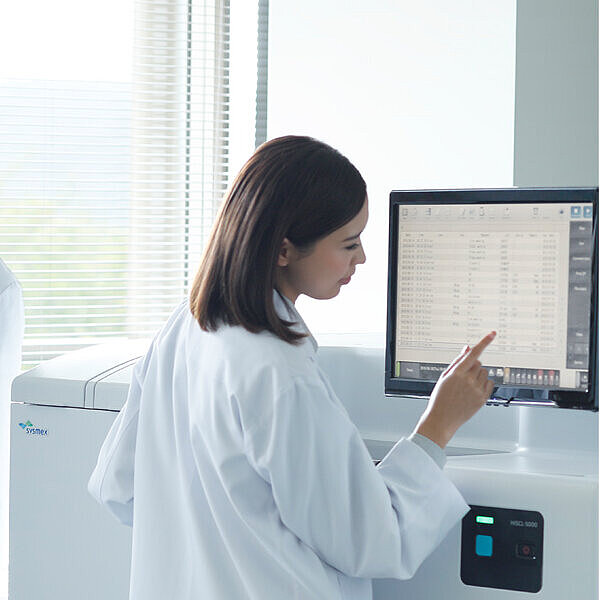The fight against doping in sports continues
Interview with Dr Reid Aikin, World-Anti-Doping-Agency (WADA)
Dr Aikin we really appreciate that you could spare some time today to talk to us.
To let our readers better understand what we will talk about, may I ask you to briefly introduce yourself and your position at the World-Anti-Doping-Agency (WADA)? Maybe also give us a clue as to what the WADA is.
The World Anti-Doping Agency (WADA) is the international independent organization created in 1999 to promote, coordinate and monitor the fight against doping in sport in all its forms.
The Agency is composed and funded equally by the sports movement and governments of the world.
Our mission is to lead a collaborative worldwide movement for doping-free sport and our key activities include the development of regulations, monitoring of compliance, and enforcement – including through investigations. The backbone of our work is the World Anti-Doping Program, which is comprised of the World Anti-Doping Code, International Standards and Guidelines – which together ensure harmonization and best practice.
WADA also plays a critical role in facilitating scientific research, education and capacity building for athletes and anti-doping stakeholders. Specifically, our Science & Medical Department oversees, among others, the accreditation of anti-doping laboratories, scientific research, the Prohibited List, Therapeutic Use Exemptions, and the Athlete Biological Passport (ABP). With respect to the ABP, our team manages both the implementation and effective use of the ABP by Anti-Doping Organizations (ADOs), as well as the further development of the ABP as an anti-doping tool.
As a result, a typical day for me can include interactions with different ADOs around the world regarding details of their ABP programs or specific cases, liaising with our different expert groups that steer many aspects of the development of the ABP, communication with one of our WADA-accredited Laboratories regarding analytical developments, or meetings with our investigations department. As a scientist, I am also fortunate to be able to collaborate with different research groups to carry out targeted research projects to address specific needs of the ABP.

Since the topic of anti-doping might not be familiar to all our readers, we like to start with a more general question: How does the WADA monitor athletes?
It is important to clarify that WADA does not routinely monitor athletes directly.
Athletes are required to enter their whereabouts into WADA’s Anti-Doping Administration and Management System (ADAMS). However, the responsibility for testing and monitoring athletes (including their ABPs and Whereabouts) is carried out by a global network of ADOs – including National Anti-Doping Organizations, International Federations, and Major Event Organizers. These ADOs are responsible for carrying out a dedicated testing plan for athletes under their jurisdiction, the results of which will then feed into the ABP. WADA in turn, as the global regulator, monitors the ADOs to ensure that their testing programs are compliant with the WADA Code and related International Standards.
It is also important to stress that the global anti-doping system is not just about testing. As mentioned above, the ABP is a useful tool to assess the longer-term profile for each athlete. A number of samples are stored for a long term to undergo re-analysis, and we continue to receive intelligence through our whistleblower program that can lead to target-testing or the launching of investigations.
Can you explain to us what the athlete biological passport is and why it is important?
The ABP is a tool to monitor selected biomarkers over time that can reveal the effects of doping.
This process involves an automated statistical analysis of the athlete’s samples once they are reported by the analysing laboratory followed by expert evaluation of suspicious profiles based on a forensic approach to the evaluation of evidence.
One of the key strengths of the passport approach is that it derives personalized limits for each individual – bringing increased sensitivity and specificity compared to population-derived decision limits. There are currently two modules of the ABP – the haematological module, which monitors blood variables from EDTA blood samples in order to uncover blood doping, and the steroidal module, which monitors selected steroid markers in urine samples to uncover steroid doping.
The ABP can be used to directly sanction athletes, but also drives other anti-doping decisions such as the decision to collect additional samples from the athlete, to further analyze existing samples by other analytical methods, to investigate an athlete or group of athletes, or to place a specific sample for that athlete into long-term storage for future re-analysis.

The haematological module of the Athlete Biological Passport is based on 12 markers derived from a standard complete blood count, as well as two multivariate scores based on two or more of these markers
Which parameters are used in anti-doping and what’s the role of Haematology?
The haematological module of the ABP is based on 12 markers derived from a standard complete blood count, as well as two multivariate scores based on two or more of these markers.
The key markers used to uncover doping are HGB, RET%, and the so called “OFF-Score” which incorporates both markers into one score. Typical patterns of doping include stimulation of RET% triggered by the use of erythropoiesis stimulating agents (ESAs) followed by increased HGB concentrations and supressed RET% in response to the artificially elevated HGB levels. The ABP can also detect blood withdrawal for a later transfusion, typified by decreased HGB and stimulated RET% and IRF, an approach that proved fruitful in uncovering organized blood transfusion schemes in both the Russian and recent ADERLASS investigations. Of course, these patterns can only be seen when the athlete is tested at the right times, so test planning is key to the success of the ABP.
Beyond an understanding of how markers respond to doping, it is critical that the expert panel reviewing these passports includes a haematologist who can evaluate the likelihood that a given variation of the passport is due to a medical condition. An understanding of pre-analytical and analytical factors impacting the results is also critical to passport evaluation, especially where samples are shipped from a considerable distance to the laboratory. Expert haematologists are also required during hearings in order to evaluate the plausibility of explanations put forward by the athlete.
What’s the expectation towards such parameters? Where are the samples measured?
Evidence of doping can be provided by the forensic evaluation of the likelihood of biomarker variations being due to doping relative to the likelihood of such variations being due to other causes (e.g. medical, analytical, pre-analytical). This approach requires a detailed understanding of the sources of variation of the selected biomarkers, knowledge of potential confounding factors, and harmonized laboratory analysis.
Therefore, samples used in the ABP can only be analysed in one of the more than 30 WADA-accredited Laboratories around the world, all of which use the same analyser technology (Sysmex XN). The choice of analyser was based largely on the fact that a reduction of analytical variance has a positive impact on the sensitivity of the ABP, where Sysmex analysers demonstrated the lowest analytical variance for RET%.
What’s the expectation towards laboratories that cooperate with WADA?
Because a travelling international athlete may have samples analysed in different WADA-accredited Laboratories around the world, it is imperative to ensure the comparability of data between laboratories. Beyond the use of a harmonized analyser technology, there are specific requirements that laboratories must meet in terms of method performance, including at the level of internal quality controls, sample analysis precision, and a rigorous external quality control scheme. Indeed, with the aim of protecting the clean athlete, it is imperative we do everything to ensure a fair and effective analytical pipeline.
We thank you very much for your time.


